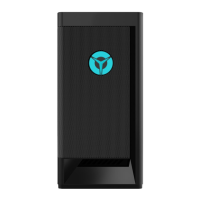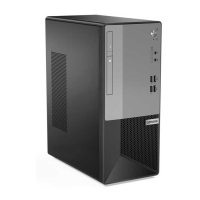Chapter 5. RAID
What is RAID
Redundant Array of Independent Disks (RAID) is a technology that provides increased storage functions and
reliability through redundancy. It also can improve data storage reliability and fault tolerance compared with
single-drive storage systems. Data loss resulting from a drive failure can be prevented by reconstructing
missing data from the remaining drives.
When a group of independent physical storage drives is set up to use RAID technology, they are in a RAID
array. This array distributes data across multiple storage drives, but the array appears to the host computer
as one single storage unit. Creating and using RAID arrays provides high performance, such as the expedited
I/O performance, because several drives can be accessed simultaneously.
Configure RAID with Intel RSTe
If your computer comes with the Intel RSTe configuration utility, you can follow the sections below to
configure RAID with Intel RSTe.
Storage drive requirements for RAID levels
Your computer supports the following RAID levels:
• RAID 0: striped disk array
– Consists of at least two SATA storage drives
– Supported strip size: 4 KB, 8 KB, 16 KB, 32 KB, 64 KB, or 128 KB
– Better performance without fault tolerance
• RAID 1: mirrored disk array
– Consists of two SATA storage drives
– Improved reading performance and 100% redundancy
• RAID 10: striped and mirrored disk array (a combination of RAID 0 and RAID 1)
– Consists of four SATA storage drives
– Supported strip size: 4 KB, 8 KB, 16 KB, 32 KB, or 64 KB
• RAID 5: block-level striped disk array with distributed parity
– Consists of at least three SATA storage drives
– Supported strip size: 16 KB, 32 KB, 64 KB, or 128 KB
– Better performance and fault tolerance
Create a RAID volume
Attention: All the existing data stored on the selected drives will be erased while the RAID volume is being
created.
To create a RAID volume:
1. Enable RAID by doing the following:
a. Restart the computer. When the logo screen is displayed, press F1 or Fn+F1.
b. Select Devices ➙ PCH SATA Configuration and press Enter.
© Copyright Lenovo 2020 41
